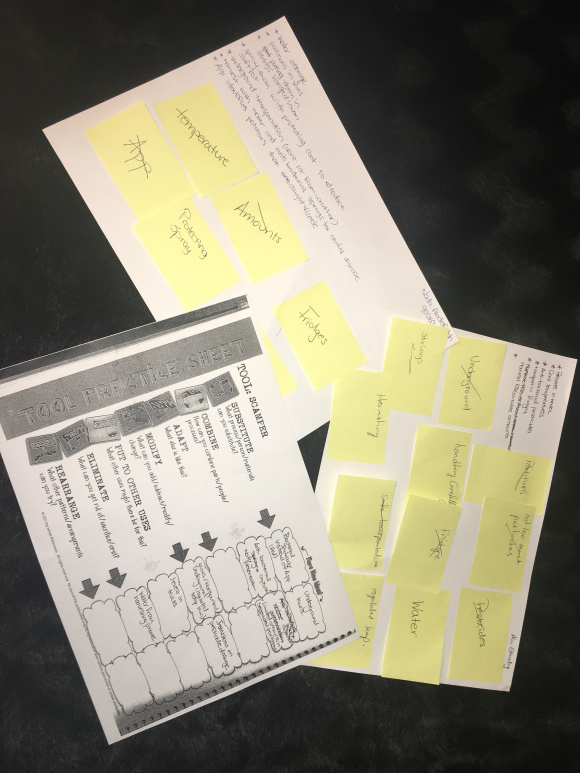In a previous class, my group and I were asked to start working on the third phase, ideation, of our D-Thinking challenge. Ideate is the part in design thinking where we work individually and as a group to elevate and understand the power of possibility; by generating, developing, and communicating new ideas, in a working ambiance that encourages wild ideas, that maintains deferred judgement, that allows building on the ideas of others and that has a main aim of quantity not quality.
At first, we were asked to come up with as many solutions as possible independently, then we gathered our solutions as a group on sticky notes to have a total of 18 solutions. Later on we were introduced to a tool named SCAMPER, which simplified the process of substituting with better alternatives, combining similar or related solutions, adapting, modifying what can be added or subtracted, putting other uses of solutions together, eliminating unnecessary aspects, and rearranging our solutions to find the most fit arrangement. Contrary to what we were doing at the beginning of the class, SCAMPER required us to look for quality more than quantity. The process we were going through in this phase was Divergent Thinking when we generated creative ideas by exploring many possible solutions.
After going through the process, I realized that at the start I was so focused on finding one applicable solution that I was blocking my mind from any creative and diverse thinking. What I encountered is called Functional Fixedness, which is the cognitive bias that limits a person to using or perceiving an object only in the way it is traditionally used or perceived. Even though I struggled in the beginning, I eventually got the hang of it!


Leave a comment